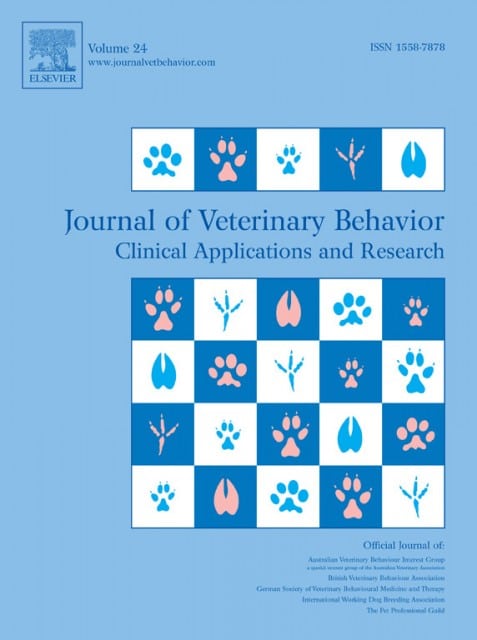If your Tripawd has phantom pain after amputation, you know it’s a very real and traumatic situation. Unfortunately it’s a poorly documented condition with little hard evidence on successful methods to treat it. But a new phantom pain in dogs study is bringing the veterinary community closer to understanding what it is, and how to help pets affected by this type of post-amputation pain.

Sometimes it seems like veterinary clinical studies happen at a snail’s pace. The reality is that every day, scientists around the world are working hard to share evidence about conditions that affect our pets. One such scientist is Dr. Marco Rosati, an Italian veterinarian with a laser focus on understanding neuropathic pain in animals, as well as epilepsy and neuromuscular disorders.

Since 2013 Dr. Rosati has served as Assistant Professor/Lecturer at the Institute for Veterinary Pathology, Ludwig-Maximilians University, Munich, Germany, where he works as a neuropathologist in the Comparative Neuropathology Laboratory.
In 2015 Dr. Rosati contacted us to assist in his latest project, a phantom pain in dogs study. The purpose of the study was to document
“Our knowledge as veterinarians is strongly limited by the absence of scientific data on the frequency of phantom limb pain, its clinical manifestations and possible risk factors associated to its occurrence,” Dr. Rosati told us in 2015. “This lack of knowledge ultimately impacts our work and the quality of care that we can offer you.”
Thanks to the willingness of the Tripawds Nation to participate, he received 107 completed surveys to help his research. “Without you, this study would have not been possible,” he told us in an email announcing the publication of his study, “Approaching phantom complex after limb amputation in the canine species.”
Unlike many other veterinary research publications, the Journal of Veterinary Behavior allows anyone to read the full text of published studies. We encourage you to browse the text, but in short here’s what Dr. Rosati and his colleagues discovered about phantom pain in dogs (referred to as “PC” or phantom complex in the study):
Important Points from Phantom Pain in Dogs Study
Dr. Rosati was specifically researching canines for this pilot study. We hope that this is the first of more studies that will also research phantom pain in Tripawd cats. Meanwhile, here are some highlights for this one:

- 53% (36/68) reported that dogs experienced pain more than 1 month before surgery (69% of oncologic patients), whereas the remaining 47% (32/68) described pain from 24 hours to 4 weeks before amputation.
- 9% (6/64) described pain from 1 to 3 months after surgery and 5% (3/64) experiencing pain from 3 to 6 months after surgery.
- Focusing on the presence of possible PC-related behaviors, dogs exhibited different manifestations of pain or discomfort (Supporting Information: Table S4). In particular, among dogs showing those manifestations in the time frame comprised from 3 months to more than 1 year after amputation, 35% exhibited muscular twitching in the stump region (23/66), 23% licked the stump (10/43), 19% whimpered (10/52), 17% yelped (6/35), 16% were restless (10/61), 11% chewed the stump (1/9), and 8% scratched the stump (1/13).
- The present investigation represents a preliminary step approaching PC in dogs after amputation of a limb. According to our survey, 14% of owners felt that their dogs experiencing pain from 1 to 6 months after surgery with and without accompanying behavioral changes. Similarly in human amputees, 5%-10% of patients report persistence and worsening of pain beyond the stage of postsurgical healing, leading to the development of a debilitating and neuropathic type of pain (Nikolajsen et al., 1997; Hill, 1999; Nikolajsen and Jensen, 2001; Meissner et al., 2015).Taken together, these findings suggest that the establishment of neuropathic pain in the residual limb may be delayed for months after surgical resection and that postoperative care might/should go well beyond wound healing.
I have a Terrier mix that recently had to have her one of her hind legs removed. She will wake up yelping. I don’t know if this is due to phantom pain, but she has never done it before the surgery or even after she hurt her leg.
Elizabeth, this could be phantom pain. Let your vet know about it and make sure your pup gets treatment. Dry needling acupuncture combined with pain control like Gabapentin is shown to make a big difference. Keep us posted in the Discussion Forums on how she’s doing.
Please tell me if there is any documented evidence that there is phantom pain for dogs that have their tails docked for arthritic reasons due to specific breed conformation. I have a Pembroke Welsh Corgi, and she aggressively chews on her tail to the point where it is now infected for the second time, and she’ll need to go to the vet for a shot of cortisone, a course of antibiotics, and a cone to keep her from reaching it. I’m very upset that breeders and the American Kennel Association are so behind the times, when many countries have banned the docking practice because it is considered cruel. How can this docking practice be deemed as illegal, as it is a practice only for the vanity of human owners? This horrific practice cuts off the end of a dog’s spine, which affects its balance, swimming abilities, and it’s ability to communicate emotions – to us and to other dogs.
Elisabet, I’m not a vet but it would make sense to me that she is feeling phantom pain. Even something like declawing is akin to cutting off thumbs, so my guess is that the tail holds similar sensations. I’m so sorry about her situation. Have you considered talking to a behaviorist about prescribing a SSRI or other calming medication? Oftentimes meds like Clomicalm and Prozac are used to help with anxiety and OCD issues, and perhaps that, along with Gabapentin, may help. It’s something to ask your vet about.
Best wishes to you and your girl, she’s so lucky to have you.
Elisabet….yes, docked tails and ears cause phantom pain. Anytime something is cut from our bodies, there is likely phantom pain. I am a myofascial release therapist and treat animal clients, too. I am also the mom to a tripaw, Akira, of 12 years. The Barnes Approach to Myofascial Release is necessary for all living things that have lost a limb, tail, ear, toe, foot or any surgery or injury. You can google to see if there is a John Barnes Myofascial Release Therapist in your area. If not, gentle pressure over the tail for several minutes daily for a few weeks will help….and gently massage her tail and scar. I am happy to answer any questions. I am trying to figure out how best to get this information on to this awesome website for more people to be informed of phantom pain, signs and treatment. There is absolutely successful treatment with myofascial release.
Hi Mary, I had amputated partial tail of 2 years old golden retriever after accident and who is having phantom pain at the moment since we took his bandage off he looks so anxious and keeps on trying to lick his tail but we have the collar on and he is taking some gabapentine as well but it’s not working and it’s really hard as well. Can you please give some suggestions to help him out. That would be really helpful for me and my baby. Thank you
And YAY for Dr Rosati for recognizing the need to understand this subject and the fortitude and determination to do something about it! I remember when the survey was first put out and glad to hear that the Triawds community had valuable input 🙂
Very interesting to find thst pain care, in some insurances, should continue long after the initial wound recovery (stitch removal).
Sooooo glad to know that progressIS being made!
THANK YOU
Sally and Alumni Happy Hannah and Merry Myrtle and Frankie too!